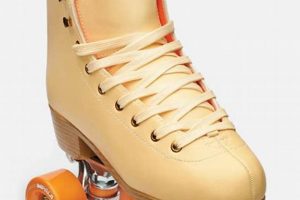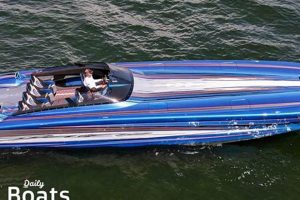The “handplant” is an advanced skateboarding trick executed by riding up a vertical surface, inverting the skateboarder’s position so that one or both hands make contact with the coping (the edge of the ramp), and then returning to a riding stance. In the context of the Skate 3 video game, performing a handplant involves utilizing the in-game physics and control mechanics to simulate this real-world skateboarding maneuver.
Mastering this technique within Skate 3 provides players with greater creative control over their character’s movements and allows for the linking of otherwise disconnected lines and tricks. Successfully executing handplants increases a skater’s style score and contributes to fulfilling in-game challenges and objectives. Historically, handplants represent a bridge between vert skateboarding and more modern street skating styles, and replicating them in a virtual environment allows players to engage with this history.
Achieving a handplant in Skate 3 requires understanding the game’s control scheme, spatial awareness of the environment, and precise timing. The subsequent sections will detail the necessary steps, from approach and initiation to landing and recovery, offering a step-by-step guide to performing this complex maneuver effectively.
Tips for Executing a Handplant in Skate 3
The following tips are designed to improve the player’s success rate when attempting handplants in the Skate 3 environment. Each point addresses critical aspects of the trick, from preparation to execution.
Tip 1: Approach Angle and Speed: Maintaining a consistent, slightly angled approach towards the ramp is essential. Excessive speed can lead to overshooting the coping, while insufficient speed will prevent adequate vertical lift. Experimentation is required to determine the optimal balance for each ramp.
Tip 2: Pre-Wind and Ollie Timing: A well-timed ollie is crucial for achieving the necessary height. Initiate the ollie slightly before reaching the transition of the ramp to maximize vertical momentum. Utilize the pre-wind mechanic (rotating the left stick before the ollie) to enhance the skater’s rotation.
Tip 3: Hand Placement and Coping Contact: Once airborne, guide the skater towards the coping. The handplant animation is triggered upon sufficient proximity. Adjust the skater’s angle mid-air to ensure clean hand contact with the coping; avoid clipping or awkward collisions.
Tip 4: Balance Management During Inversion: While inverted, small adjustments to the left stick maintain balance. Overcorrection can lead to a fall; subtle movements are preferred for stability and controlling the rotation.
Tip 5: Smooth Transition Back to Riding: Timing the release from the handplant is as critical as the initial approach. As the skater begins to descend, gently rotate the left stick in the direction of the ramp. This facilitates a smooth transition back onto the board and prevents abrupt landings.
Tip 6: Consistent Practice and Ramp Familiarity: Repetitive practice on various ramps solidifies muscle memory and enhances intuition for timing and control. Experiment with different ramps to identify the characteristics and adjust technique accordingly.
By adhering to these points and dedicating time to practice, players can significantly improve their handplant execution in Skate 3. A mastery of this skill not only expands the player’s trick repertoire but also enhances overall gameplay enjoyment.
With these tips in mind, the player is now well-equipped to practice and ultimately master the art of handplanting within the digital skateboarding world of Skate 3.
1. Approach Speed
Approach speed is a critical determinant in executing a successful handplant within Skate 3. The relationship is direct: the skater’s velocity leading up to the ramp significantly influences the height achieved and, consequently, the feasibility of the handplant maneuver.
- Insufficient Velocity and Inadequate Ramp Clearance
A lack of sufficient forward momentum results in a lower ollie height. This deficiency prevents the skater from reaching the necessary altitude to initiate hand contact with the coping. The animation trigger for the handplant requires the skater to be within a specific proximity to the coping, which is unattainable without adequate speed.
- Excessive Velocity and Over-Shooting
Conversely, excessive speed poses a different set of challenges. Too much momentum can cause the skater to overshoot the coping, resulting in a missed handplant opportunity or a collision with the ramp beyond the intended landing area. Precise control is lost, and the skater may be ejected from the board.
- Ramp Angle and Optimal Speed Calibration
The angle of the ramp dictates the optimal speed range. Steeper ramps generally require less approach speed, whereas shallower ramps necessitate more. Determining this equilibrium is a matter of experimentation and adapting to the specific environment within Skate 3. Each skate park presents unique ramp geometries, demanding nuanced speed adjustments.
- Speed as a Factor in Trick Combinations
Approach speed also influences the possibility of chaining tricks before or after the handplant. Maintaining enough speed allows for transition into or out of the handplant with another grind or flip trick. Conversely, poor speed management limits the flow and potential complexity of trick combinations.
In summary, approach speed in Skate 3 handplants is not merely a matter of accelerating towards a ramp. It necessitates careful consideration of ramp geometry, desired trick combinations, and the game’s physics engine to achieve the optimal balance that enables a clean and stylish execution. The skill lies in modulating speed to maximize height without sacrificing control.
2. Ollie Timing
Ollie timing is an indispensable element for executing a handplant in Skate 3. Precise timing of the ollie, the foundational skateboarding trick of popping the board into the air, dictates the height and trajectory necessary to successfully transition into the handplant maneuver. Inadequate timing renders the handplant unattainable; therefore, it warrants detailed examination.
- Premature Ollie Initiation
Initiating the ollie too far in advance of the ramp’s transition point results in a loss of momentum and height. The skateboarder will peak their jump prematurely, failing to gain the necessary vertical lift to reach the coping. Consequently, there will be insufficient height to trigger the handplant animation sequence.
- Delayed Ollie Initiation
Delaying the ollie until the skater is already on the ramps transition leads to a similar deficiency. The skater does not capitalize on the ramp’s incline to amplify the jump, again lacking the height necessary for a successful handplant. The resulting trajectory is typically too flat, preventing the necessary vertical orientation.
- The Apex Point and Handplant Transition
The ideal ollie timing allows the skater to reach the apex of the jump arc proximate to the coping. This alignment facilitates the initiation of the handplant. Reaching peak height precisely at this moment optimizes the skater’s proximity and orientation relative to the coping, increasing the probability of the game recognizing and executing the handplant animation.
- Influence of Ramp Geometry
Different ramp geometries necessitate adjustments to ollie timing. Steeper ramps may require a slightly earlier ollie, leveraging the aggressive transition to propel the skater upward. Shallower ramps may demand a later ollie to maintain momentum and prevent premature deceleration. Adaptability to the specific ramp environment is therefore a crucial aspect of ollie timing proficiency.
In summary, ollie timing in relation to handplant execution in Skate 3 is a complex interaction of physics, environmental factors, and player skill. Correct timing transforms the skaters trajectory to align with the coping, making the handplant feasible. Conversely, mistimed ollies inevitably lead to failure, regardless of other factors. Mastery of ollie timing is, therefore, a prerequisite for consistently performing the handplant maneuver.
3. Angle Control
Angle control, in the context of performing a handplant in Skate 3, is paramount. It dictates the alignment of the skater’s trajectory and body orientation relative to the ramp’s coping, influencing both the successful initiation of the handplant and the subsequent landing. A miscalculated approach angle or mid-air adjustment can preclude hand-to-coping contact, result in a failed handplant, or induce an uncontrolled fall. The physics engine within Skate 3 demands a specific range of angles for the handplant animation to trigger; deviations from this range typically yield unfavorable outcomes.
The importance of angle control extends beyond simply reaching the coping. The angle at which the skaters hands make contact influences the balance and stability during the inverted phase of the handplant. A perpendicular or near-perpendicular approach to the coping provides a stable base of support. Acute or obtuse angles, however, introduce rotational forces that can destabilize the skater, increasing the difficulty of maintaining balance and executing a clean transition back onto the board. One practical example is a scenario where the skater approaches the ramp at a severe angle; the resulting handplant may appear as a slide along the coping, rather than a stable, controlled inversion, often leading to an unsuccessful recovery.
Effective angle control in Skate 3 handplants requires a combination of pre-emptive planning and mid-air adjustments. The skaters initial approach trajectory should be carefully chosen, considering the ramp’s geometry and desired speed. Subsequent adjustments during the ollie, achieved through subtle manipulations of the left analog stick, fine-tune the skaters orientation in flight. Mastering this delicate balance is key to consistently performing handplants in diverse skate park environments, allowing for creative trick combinations and high scores. Challenges often arise when transitioning between ramps with varying curvatures or when attempting to integrate the handplant into a complex sequence of tricks; in these instances, precise angle control becomes even more critical.
4. Hand Placement
Within the execution of a handplant in Skate 3, hand placement constitutes a critical juncture between theoretical intent and physical manifestation. Correct hand placement dictates the successful transition from airborne skater to inverted stance, acting as the literal and figurative pivot point of the maneuver. Improper hand placement invariably leads to instability, animation failure, or outright collision with the environment, thus negating the attempt. Successful hand placement, conversely, allows for sustained balance, trick variation, and seamless integration into trick combinations.
The physics engine governing Skate 3 dictates a strict parameter for acceptable hand placement. The in-game character’s hands must make contact with the coping of the ramp within a predefined area. Deviations from this zone, whether through miscalculated trajectory or insufficient height, result in missed hand-to-coping contact, thereby aborting the handplant animation. For example, a skater approaching with excessive lateral movement might find their hand clipping the side of the ramp, rather than making full contact with the coping surface, and thereby losing the handplant opportunity. The digital constraints, therefore, demand a level of precision analogous to real-world skateboarding, where nuanced adjustments in body positioning are crucial to the trick’s success.
Achieving proper hand placement necessitates mastering prior steps, including approach speed, ollie timing, and angle control. It serves as the tangible consequence of these preceding actions, solidifying a skater’s control over the game’s virtual physics. Though challenging, proficient hand placement enables advanced techniques, such as varying the number of hands used (one-handed versus two-handed plants), or chaining tricks immediately before or after the handplant. The skillful application of hand placement transforms a basic trick into a stylized statement of in-game mastery.
5. Balance Retention
Balance retention is a pivotal component of handplant execution in Skate 3. It directly influences the duration of the inverted stance and, consequently, the opportunity for style variation and a successful transition back to a riding position. The physics engine models balance as a dynamic system subject to minor perturbations; effective skater control must compensate for these fluctuations.
- Center of Gravity Management
The skater’s center of gravity shifts significantly during the inversion phase. Subtle adjustments using the left analog stick modulate the distribution of weight, counteracting rotational forces that threaten to destabilize the handplant. An inability to manage the center of gravity results in a precipitous fall, negating the trick attempt. Successful management enables extended holds and stylistic variations.
- Coping Friction and Hand Pressure
The friction between the skater’s hands and the coping provides a stabilizing force. Excessive pressure can arrest momentum prematurely, while insufficient pressure compromises grip and leads to slippage. Precise calibration of hand pressure, achieved through subtle stick movements, maximizes stability without impeding the necessary rotational adjustments for a smooth transition.
- Recovery Trajectory Prediction
Balance retention also entails anticipating the trajectory necessary for a seamless return to the riding position. As the skater begins to descend, subtle shifts in weight and angle, again controlled through the left analog stick, influence the skater’s landing angle and orientation. Misjudgments at this stage lead to awkward landings or complete falls.
- Inertial Compensation
The inertia generated during the approach and ollie continues to affect the skater’s balance throughout the handplant. Compensating for this residual momentum requires anticipation and proactive control inputs. Failure to account for inertial forces amplifies the impact of other destabilizing factors, further jeopardizing balance retention.
These facets of balance retention are interconnected, forming a complex system that demands mastery for consistent handplant execution in Skate 3. Successful management of these elements not only enhances trick performance but also contributes to the overall aesthetic and fluidity of the skater’s style, thereby elevating the player’s in-game experience.
6. Smooth Landing
A smooth landing is the definitive conclusion of the handplant maneuver in Skate 3. It represents the culmination of precise execution of preceding steps, directly impacting the skater’s momentum and the potential for linking subsequent tricks. The absence of a smooth landing negates the benefits of a well-executed handplant, often resulting in a loss of speed, an awkward stance, or a complete fall. The physics engine of Skate 3 rewards a clean transition back to the board with retained momentum and stability; a jarring or uncontrolled landing penalizes the skater by diminishing both. The linkage between a smooth landing and overall handplant success is, therefore, inextricable.
Achieving a smooth landing in Skate 3 necessitates careful attention to several factors. The skater’s angle of descent must align with the ramp’s surface to minimize impact. Subtle adjustments using the left analog stick during the final phase of the handplant influence this angle. Furthermore, the skater’s weight distribution plays a crucial role. Centering the skater’s weight over the board prevents imbalances that could lead to wobbling or abrupt deceleration upon contact. The timing of the landing is also significant; landing too early or too late disrupts the skater’s momentum and can result in instability. These interconnected elements underscore the complexity of a smooth landing and its importance within the broader context of handplant execution. The skill required is analogous to a gymnast sticking a landing; seemingly minor adjustments yield significant differences in the outcome.
In summary, the ability to consistently achieve smooth landings after handplants in Skate 3 distinguishes proficient players from those who merely perform the trick sporadically. The smooth landing facilitates the seamless integration of the handplant into more complex trick sequences, expanding creative possibilities and enhancing overall gameplay. While the initial focus may be on simply achieving the handplant itself, dedicated practice on landing mechanics is essential for maximizing the maneuver’s value and truly mastering this advanced technique. The challenges associated with mastering it are significant; however, the rewards, in terms of both in-game performance and stylistic expression, are substantial.
Frequently Asked Questions
This section addresses common inquiries regarding handplanting within the Skate 3 environment, providing definitive answers and clarifying potential misunderstandings. The following questions and answers aim to enhance player comprehension and improve trick execution.
Question 1: Is specific skater stats necessary for performing handplants?
No. The ability to handplant in Skate 3 is not contingent upon predefined skater statistics. It is a skill predicated on player input, timing, and an understanding of the game’s physics engine, rather than inherent skater attributes.
Question 2: Are there specific locations best suited for learning handplants?
Certain locations, particularly those featuring smooth transitions and ample coping, are more conducive to learning. The “Mega Compound” and various skate parks within the game provide controlled environments for practicing and refining handplant technique.
Question 3: Does the difficulty setting affect the handplant’s execution?
Yes, to a degree. While the fundamental mechanics remain consistent across difficulty settings, higher difficulties introduce stricter timing windows and more demanding balance requirements, thereby increasing the challenge associated with handplant execution.
Question 4: Can handplants be performed on any vertical surface?
No. Handplants are specifically designed for coping, which is the rounded edge found on transitions within skate parks. Attempting to handplant on a wall or other non-coping surface will not trigger the handplant animation.
Question 5: Does the board graphic or type impact handplant performance?
No. The aesthetic customization of the board, including graphics and brand, has no bearing on gameplay mechanics. Handplant performance is solely determined by player skill and control inputs.
Question 6: What control configurations are optimal for handplants?
The default control configuration is generally sufficient. However, individual players may find certain custom configurations more conducive to their play style. Experimentation with control mapping is encouraged to optimize comfort and precision.
These frequently asked questions highlight key aspects of handplant execution in Skate 3, emphasizing the importance of skill, timing, and environmental awareness.
The following section explores common issues that arise during handplant attempts and offers targeted solutions.
Conclusion
This exploration of “how to handplant on skate 3” has dissected the maneuver into its constituent elements, encompassing approach speed, ollie timing, angle control, hand placement, balance retention, and smooth landing. Each factor contributes uniquely to successful execution, demanding player proficiency and precise manipulation of the game’s control scheme. Comprehension of these mechanics enhances performance and allows for greater creative expression within the virtual skateboarding environment.
Continued practice and experimentation remain essential for achieving consistent results. The handplant, while challenging, represents a significant skill milestone. Mastering this trick expands the player’s trick repertoire, elevates overall gameplay, and unlocks more complex trick combinations. Dedication to the principles outlined herein will enable players to realize their potential within the world of Skate 3.







